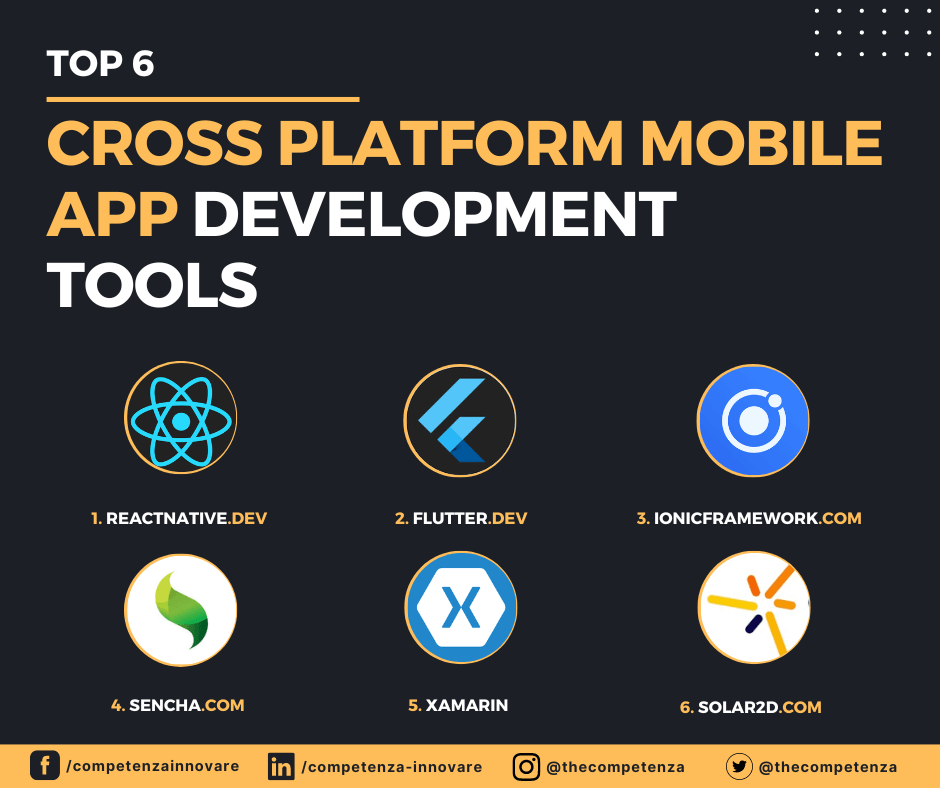
Cross-Platform Development Tools: Bridging the Gap in App Development
In today’s rapidly evolving digital landscape, the demand for applications that work seamlessly across multiple platforms is higher than ever. Users expect consistent experiences whether they're on a smartphone, tablet, desktop, or web browser. To meet these expectations, developers are increasingly turning to cross-platform development tools. These tools enable the creation of applications that can run on various operating systems with a single codebase, significantly reducing development time and costs. In this blog, we'll explore the benefits of cross-platform development, the leading tools available, and how they are shaping the future of app development.

The Advantages of Cross-Platform Development
1. Cost-Efficiency
Developing separate applications for different platforms can be costly and resource-intensive. Cross-platform development tools allow developers to write code once and deploy it across multiple platforms, reducing the need for separate teams and minimizing overall development costs.
2. Faster Time-to-Market
With a single codebase, the development process becomes more streamlined, enabling faster iterations and quicker deployments. This accelerated development cycle allows businesses to bring their products to market more rapidly, gaining a competitive edge.
3. Consistent User Experience
Maintaining a consistent user experience across different platforms can be challenging. Cross-platform tools ensure that the application looks and performs similarly on all devices, providing a cohesive experience for users regardless of the platform they choose.
4. Easier Maintenance
Managing updates and bug fixes for multiple codebases can be a logistical nightmare. Cross-platform development simplifies maintenance by centralizing updates, ensuring that changes are applied uniformly across all platforms.
5. Broader Reach
By supporting multiple platforms, cross-platform applications can reach a wider audience. This inclusivity is particularly beneficial for businesses looking to expand their user base and capture a larger market share.
Leading Cross-Platform Development Tools
1. Flutter
Developed by Google, Flutter is an open-source UI toolkit that enables developers to create natively compiled applications for mobile, web, and desktop from a single codebase. Its key features include:
Hot Reload: Allows developers to see changes in real-time without restarting the application.
Rich Widgets: Provides a comprehensive set of customizable widgets that enable fast and expressive UI development.
Performance: Offers near-native performance due to its direct compilation to native code.
2. React Native
Maintained by Facebook, React Native is a popular framework for building mobile applications using JavaScript and React. Its notable features include:
Reusable Components: Enables code reuse between iOS and Android, speeding up development.
Large Community: A vibrant community and extensive library of plugins and tools support developers.
Strong Performance: Utilizes native components to deliver high-performance applications.
3. Xamarin
Acquired by Microsoft, Xamarin allows developers to build Android, iOS, and Windows applications using C# and .NET. Key features include:
Native Performance: Provides access to native APIs, ensuring high performance and native look and feel.
Shared Codebase: Facilitates code sharing across platforms, reducing development time and effort.
Integration with Visual Studio: Seamlessly integrates with Visual Studio, offering robust development and debugging tools.
4. Unity
Primarily known for game development, Unity is also used for creating cross-platform applications. Its main features include:
Versatility: Supports a wide range of platforms, including mobile, desktop, web, and consoles.
3D and 2D Support: Provides powerful tools for both 3D and 2D development.
Rich Asset Store: Offers a vast library of assets and plugins to enhance development.
5. Ionic
Ionic is an open-source framework that uses web technologies (HTML, CSS, JavaScript) to build cross-platform mobile applications. Key features include:
Web Standards: Leverages standard web technologies, making it accessible for web developers.
Comprehensive UI Components: Offers a library of pre-designed UI components to speed up development.
Integration with Angular: Seamlessly integrates with Angular, enhancing its capabilities for building complex applications.
Case Studies: Success Stories in Cross-Platform Development
Alibaba
Alibaba uses Flutter to power parts of its mobile app, benefiting from the framework’s ability to deliver a consistent and high-performance user experience across iOS and Android platforms.
Skype
Skype leverages React Native to maintain a unified codebase for its mobile applications, allowing for faster updates and a consistent user experience across different operating systems.
UPS
UPS uses Xamarin to streamline its mobile application development process, ensuring that their logistics and package tracking services are accessible on both Android and iOS devices.
Challenges and Future Directions
While cross-platform development tools offer numerous advantages, they also come with challenges:
Performance: Although cross-platform tools strive for native-like performance, there can still be discrepancies compared to fully native applications.
Platform-Specific Features: Some native features may not be fully supported or may require additional workarounds, potentially complicating development.
Learning Curve: Developers familiar with native development may need time to adapt to new tools and frameworks.
Looking forward, advancements in cross-platform development tools are expected to address these challenges. Enhanced performance, better integration of platform-specific features, and more intuitive development environments will likely drive even greater adoption of these tools. Additionally, the rise of new technologies like Progressive Web Apps (PWAs) and the continued evolution of AI and machine learning will further expand the possibilities for cross-platform development.
Article Contents
- The Advantages of Cross-Platform Development
- Leading Cross-Platform Development Tools
- Case Studies: Success Stories in Cross-Platform Development
- Challenges and Future Direction
- Conclusion